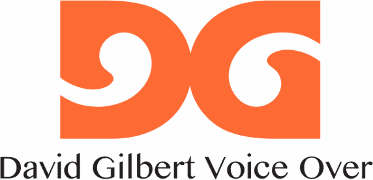A comprehensive guide for anyone who creates or manages the development of eLearning training programs.
Ultimately, the goal of any instructional or compliance training program is to maximize the absorption and retention of the content. This ensures the impact of the project is not diluted by any one factor in the development, for example, unprofessional narration.
This is critical. After all the effort and money invested in a proper LMS system, snazzy graphics, 3D animations, script preparation and approvals, music selection, and any other mechanics that go into the project, the last thing you want is to do is have the voice delivering the message to be one of the reasons people DON’T want to “be subjected” to the training.
Here are several reasons why a professional elearning narration voice is going to provide better results than an in-house non-professional:
Time
- You could be working on other more important or time-sensitive projects while the voice over talent is recording the script.
- Professional narrators can usually turn around projects within 24-48 hours (depending on script length), providing clean, edited electronic files that are ready to insert into the finished project saving you additional time – and since this is their “day job” the quality and speed will be better than a non-pro. A pro will meet or exceed your deadlines.
- Pros narrate every day so they are ready to help at any time – never waiting for internal staff to be available.
- Pros can help maintain continuity in a project over time. Employee turnover during a project would either be a patchwork quilt of different narrators with varying degrees of competency and engagement over time or need a complete re-take, perhaps delaying deployment.
Performance – Information Retention
- Pros know how to engage with the script. When they’re connected, so is the learner.
- Pros use professional equipment and narrate in sound-treated recording spaces to avoid distracting acoustic issues such as echoes, background office or street noises. A professional would never use a computer mic or cheap USB microphones audio should enhance the content, not distract from it.
- Pros control issues such as sibilance, popped “p’s”, extra mouth noises/clicks, overly loud and distracting breath noises, brushing up against the microphone while narrating, or speaking too closely or too far away from the mic (or varying the distance from sentence to sentence).
- Amateurs have not been trained to control their pitch, volume or energy – voice over is much more than just “reading it out loud into a microphone.”
- Pros understand the need for great storytelling as we relate more to storytellers than lecturers, so the right tone of delivery is very important. If the delivery comes across as monotone it will put the viewer to sleep and decrease engagement, absorption, and retention of the information.
- A professional can become a partner assisting with script revisions, providing alternative text, helping with grammar and pronunciation issues as well as a variety of other issues including abbreviations, how to handle numbers/dates, and much more.
Cost
- The more engaged the listener is, the more effective the outcome will be and the higher the ROI
- You can negotiate a variety of options with the voice talent to make each project more affordable including volume discounts – but rates are generally more accessible than years ago.
- A great option is to request a short sample of the professional elearning narration and compare with one done by the internal staff and see the difference for yourself – or use as ammunition for management sign-off.
Credits for content include: Randye Kaye (randyekaye.com), Marie Hoffman (www.mariehoffmanvo.com), Kim Handysides (kimhandysidesvoiceover.com), J Michael Collins (www.jmcvoiceover.com), John Kissinger (www.johnkissinger.com), and Paul Boucher (paulboucher.com)

